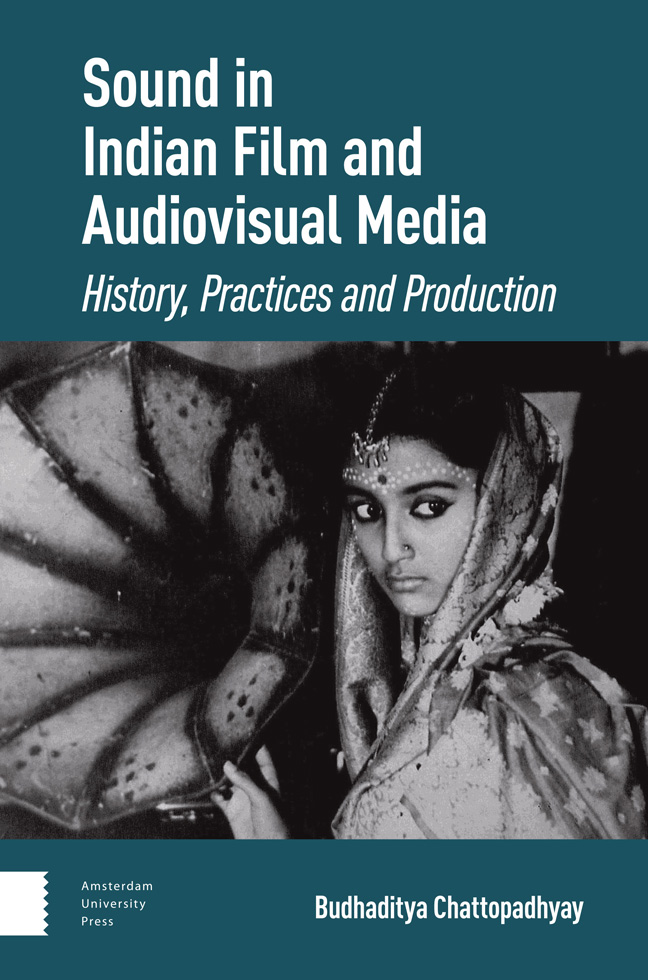Book contents
- Frontmatter
- Contents
- Acknowledgements
- 1 Introduction
- 2 The Technological Frameworks
- 3 Direct Sound and Early Talkies
- 4 Sound of the Golden Age
- 5 Tracing the Sound in Satyajit Ray’s Film-works
- 6 Popular Films from the Dubbing Era
- 7 Parallel Sounds, Radical Listening – Part I
- 8 Sholay, Stereo Sound and the Auditory Spectacle
- 9 The Advent of Digital Sync Sound
- 10 The Surround Revolution
- 11 Sound in the Audiovisual Media Arts
- 12 Parallel Sounds, Radical Listening – Part II
- 13 A Concluding Voiceover
- Bibliography
- Filmography
- Index
1 - Introduction
Published online by Cambridge University Press: 20 February 2024
- Frontmatter
- Contents
- Acknowledgements
- 1 Introduction
- 2 The Technological Frameworks
- 3 Direct Sound and Early Talkies
- 4 Sound of the Golden Age
- 5 Tracing the Sound in Satyajit Ray’s Film-works
- 6 Popular Films from the Dubbing Era
- 7 Parallel Sounds, Radical Listening – Part I
- 8 Sholay, Stereo Sound and the Auditory Spectacle
- 9 The Advent of Digital Sync Sound
- 10 The Surround Revolution
- 11 Sound in the Audiovisual Media Arts
- 12 Parallel Sounds, Radical Listening – Part II
- 13 A Concluding Voiceover
- Bibliography
- Filmography
- Index
Summary
Abstract: Chapter 1 introduces the historical, conceptual, methodological, and theoretical framework of research into Indian film and media arts sound production. Setting the book’s scholarly tone, several concepts are discussed as key research entry points. Critically listening to the trajectories of sound production in India, a hypothesis is proposed exploring technological innovations and shifts that have led to manifold sound recording and presentation advances through various production phases. In this chapter, historical trajectories are studied to understand the shifts in various differing yet concurrent sound practices used to engage audiences. Critical observation, reflection, and analysis of passages of sound from representative Indian film and audiovisual media works, specifically from the three phases of sound production identified, are made to qualify these claims.
Keywords: Indian cinema, sound studies, realism, media aesthesis, media art history, film sound
Background Sounds
In the autumn of 2006, I was a final-year student of audiography at the Satyajit Ray Film and Television Institute (SRFTI), a prestigious institute for film education in India. I was invited to speak about my experience as an emerging sound art practitioner and my concerns regarding the use of sound in cinema at a conference titled Sound Cultures in Indian Cinema. The conference was held with the intention of launching an Indian film sound research programme in the Department of Film Studies at Jadavpur University in Kolkata. I presented a student paper at the conference, which was later published in the Journal of the Moving Image (2007). The paper was my first critical intervention within the field of (film) sound research and, as such, allowed me to enter academic debates around sound in film and audiovisual media as an active sound practitioner and artist.
This intervention was significant for several reasons. Firstly, as a sound practitioner, that is, one who explores the medium of sound for aesthetic, cultural, and artistic purposes, as well as one who theorizes about it, I was able to offer novel insights into the ongoing academic debates in film sound research, which, up to that point, had been based on mostly non-concrete ideas about sound recording and design in films by seasoned academics, who were not sound practitioners themselves.
- Type
- Chapter
- Information
- Sound in Indian Film and Audiovisual MediaHistory, Practices and Production, pp. 9 - 44Publisher: Amsterdam University PressPrint publication year: 2023

